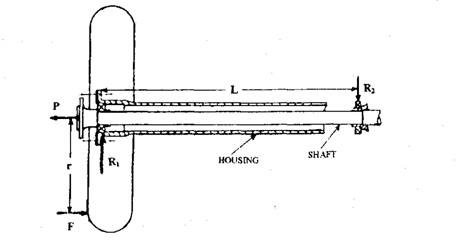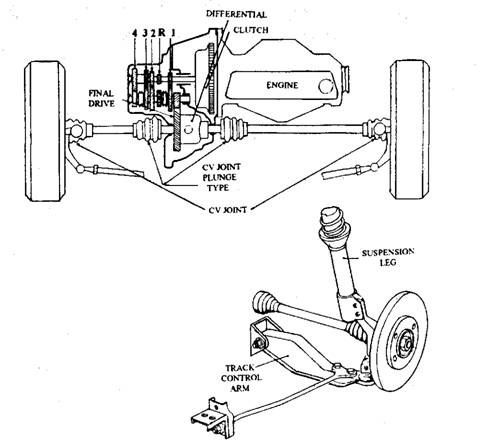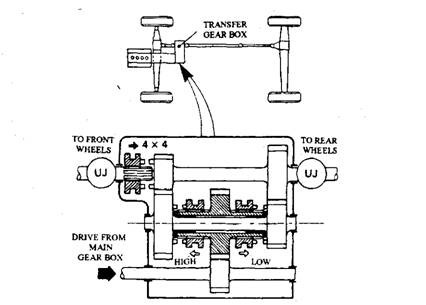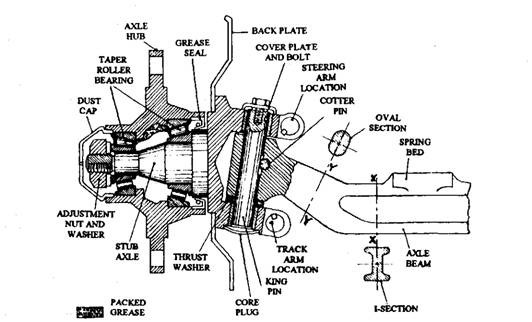Differential

Differential When both rear wheels are connected to a common driving shaft rapid wear of\rear tyre, and difficulty in steering from the straight-ahead position are soon experienced. It can be seen in Fig. 26.43 that the outer wheel must travel a greater distance than the inner wheels during cornering of the vehicle. Hence, if the wheels are interconnected, the tyres have to 'scrub' over the road surface and tend to keep the vehicle moving straight ahead. These problems can be minimized by driving one wheel and allowing the other to run free. But this provides unbalanced driving thrust and unequal cornering speeds due to which the arrangement was not accepted. The problem was solved in 1827 by Pequeur of France who invented the differential. This mechanism rotates the wheels at different speeds, while maintaining a drive to both wheels. Example 26.4. The steering set of a, vehicle provides a turning-circle radius of 6.6 m with a wheel-track width of 1.2 m. The effective road whe




